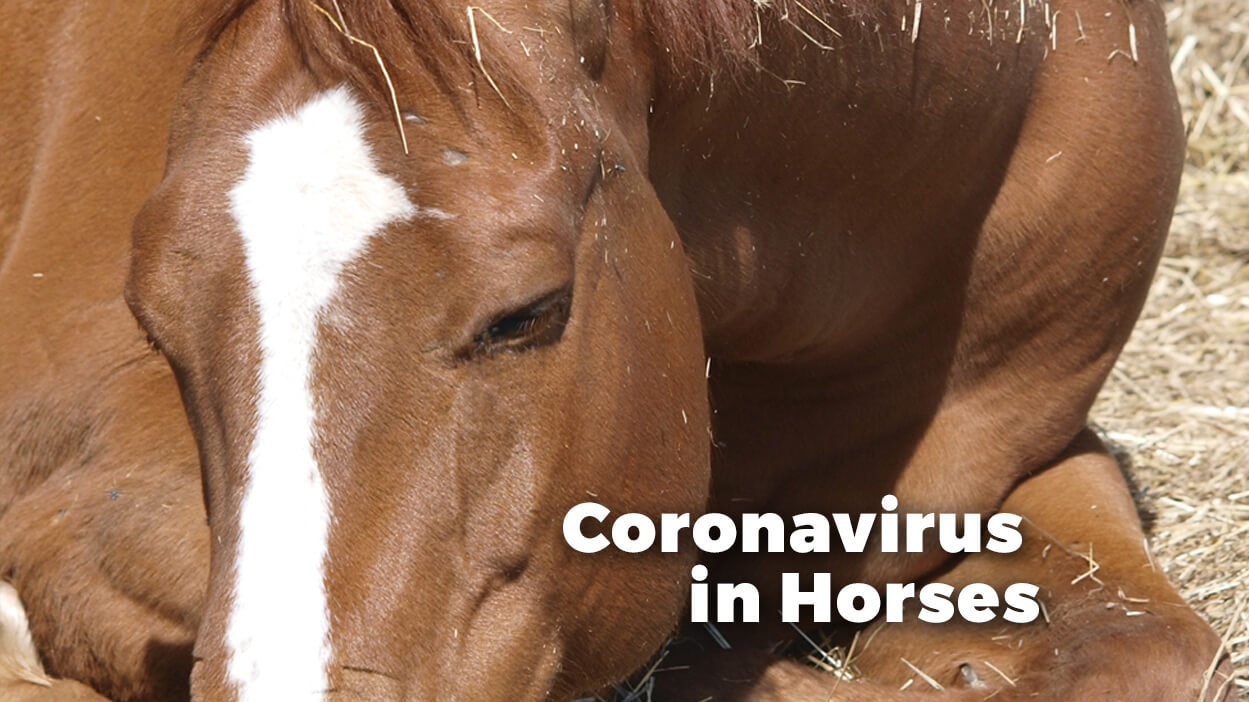Imagine walking into the barn in the morning to discover one of the horses in mild distress. He does not have his head out the stall door and he’s kicking his belly and appearing depressed. You open the door to investigate a bit further and see loose manure in his bedding. This is certainly abnormal for this particular horse, so you decide to call your vet, thinking it might be colic.
When the vet arrives, she completes a physical exam and makes note of the clinical signs the horse is exhibiting. It is noted that the horse did not finish his dinner the previous evening and is acting lethargic. The horse also has an elevated temperature and is looking at his sides. It is suggested to run a blood test and send a fecal sample to the lab to help determine how severe the illness is. The vet makes a tentative diagnosis of colitis, an inflammation of the lining of the large intestine, and starts the horse on some supportive treatments in the form of IV fluids and non-steroidal anti-inflammatories (NSAIDs).
Colitis in horses can be caused by a multitude of factors including viruses, bacteria, and overuse of NSAIDs. One emerging cause of colitis that horse owners are becoming increasingly aware of is equine coronavirus. Coronaviruses comprise a large group of RNA viruses that can cause both respiratory and enteric signs of disease in various species. The equine enteric coronavirus has been responsible for a number of outbreaks across the United States, Canada, Europe and Japan.
The Cornell University Animal Health Diagnostic Center reports that it has seen an increase in the diagnosis of equine coronavirus cases since the first outbreaks were investigated in 2010. Veterinarians are attributing this to improved awareness of the disease and more diagnostic submissions.
Transmission of this debilitating disease occurs via the fecal-oral route (ingesting the virus while grazing) and clinical signs appear 48-72 hours after exposure. Peak shedding of the virus occurs three to four days after clinical signs such as those described above appear. They usually last about a week and often resolve with supportive care, but fecal shedding of the virus can last for several weeks, during which time the patient should be isolated so as not to spread the virus to other horses. Horses over the age of two are most commonly affected.
Hydrating a horse suffering from diarrhea can be very difficult, especially if it is severe. For this reason, hospitalization is often the best and most cost-effective way to treat the horse.
Thankfully, mortality due to equine coronavirus is rare. It is thought that death occurs not from the virus itself, but from secondary neurologic signs related to inflammation of the cells lining the gastrointestinal tract, causing certain molecules such as ammonia to enter the bloodstream. It is interesting to note that morbidity – the rate of the disease in the horse population – ranges from 10-83%. This means the virus has been isolated in the feces of normal foals and adult horses that have no clinical signs.
Because the virus can be transmitted from horse to horse when an affected equine passes manure and others eat grass adjacent to it, certain biosecurity measures must be put in place as soon as possible to prevent spread of the disease. For example, if you see a horse exhibiting clinical signs of colitis, immediately isolate it well away from others. A stall at one end of the barn with no horses in surrounding stalls works well if there is no designated isolation area. The horse should have its own water and feed buckets, and people entering its stall should wear coveralls and shoes for feeding and handling that are not worn into any other stalls.
If you suspect your horse is exhibiting signs of colitis, it is important to notify your veterinarian as soon as possible. Coronavirus is often a self-limiting infection that ends with a positive outcome; however, it is just one of the many factors that can cause colitis in horses. It is important to quickly identify the cause so your horse can be treated appropriately.

